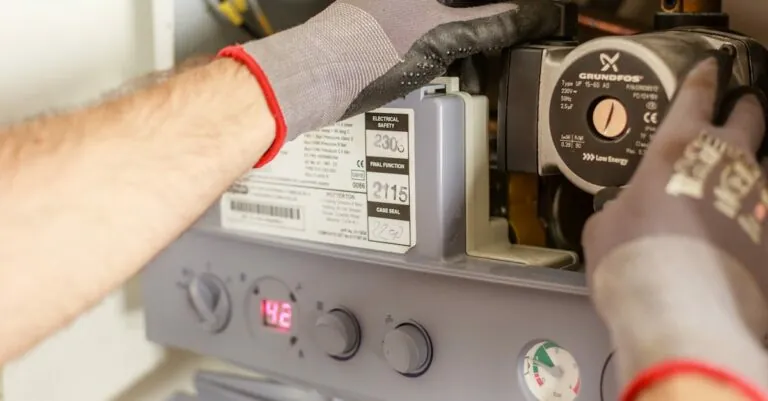In a world where everything seems to break at the most inconvenient times, self-repair tools are like the superheroes of DIY. Forget waiting for that overpriced technician to show up; these handy gadgets empower anyone to tackle repairs with confidence. Whether it’s a wobbly chair or a stubborn leaky faucet, self-repair tools turn ordinary folks into extraordinary fixers.
Table of Contents
ToggleOverview of Self-Repair Tools
Self-repair tools play a vital role in empowering individuals to manage repairs independently. Their accessibility and versatility make everyday maintenance tasks more achievable.
Definition and Importance
Self-repair tools consist of various equipment designed for individuals to conduct repairs and maintenance without professional help. These tools provide numerous advantages, including cost savings, enhanced problem-solving skills, and increased confidence in handling repairs. When people utilize self-repair tools, they develop a sense of accomplishment and ownership over their space. The ability to fix issues personally fosters a more sustainable lifestyle as individuals rely less on external services. For example, using a simple screwdriver for minor repairs can prevent the need to hire a handyman.
Types of Self-Repair Tools
Self-repair tools encompass a wide range of items suited for different tasks. Common tools include screwdrivers, pliers, wrenches, and hammers, each serving specific purposes. Power tools like drills and saws enable more complex projects, while hand tools remain essential for everyday fixes. Additionally, specialized tools, such as pipe wrenches or stud finders, assist with specific repairs. Kits that include various tools cater to beginners, offering essential items in one package. Overall, diverse types of self-repair tools contribute to an effective toolkit for a variety of household tasks.
Benefits of Self-Repair Tools

Self-repair tools offer a variety of benefits that empower users to handle everyday repairs efficiently. Individuals gain skills and confidence, leading to a more self-sufficient lifestyle.
Cost-Effectiveness
Cost savings represent a significant advantage of using self-repair tools. DIY repairs eliminate the need for costly technician fees, making it feasible for anyone to manage maintenance tasks. For example, a simple toolset can reduce repair costs by up to 70%. Investing in essential tools proves beneficial over time as users tackle multiple projects without ongoing expenses. Additionally, many repairs require minimal materials, which keeps costs low while providing practical skills.
Sustainability
Sustainability plays a crucial role in the appeal of self-repair tools. By fixing items instead of discarding them, individuals contribute to waste reduction, positively impacting the environment. Repairing items extends their lifecycle, leading to less landfill waste and a smaller carbon footprint. Engaging in self-repair practices promotes a culture of resourcefulness, encouraging others to consider repairing before replacing. This mindset fosters a stronger connection between individuals and their possessions, which further supports environmental efforts.
Popular Self-Repair Tools in the Market
Numerous self-repair tools cater to DIY enthusiasts. Understanding the best options helps users maximize efficiency.
Handy Repair Kits
Handy repair kits often include essential items like screwdrivers, pliers, and tape measures. These tools enable users to tackle common household fixes with ease. Compact and portable, many kits fit neatly into drawers or closets, making them convenient for everyday use. Basic kits typically feature the most used tools, allowing anyone a straightforward approach to repairs. Some manufacturers offer kits designed for specific tasks, such as electronics or plumbing, broadening their appeal. Overall, handy repair kits serve as excellent starter sets, empowering individuals to address minor issues independently.
Advanced Tool Sets
Advanced tool sets encompass a variety of power tools and specialized items. These sets cater to more complex projects that require additional precision and strength. Include items like drills, saws, and wrenches for comprehensive coverage of tasks around the home. Professionals and serious DIYers benefit from these extensive collections, as they provide versatility. Many advanced sets also come with additional accessories, enhancing their functionality for different applications. Investing in advanced tool sets facilitates significant home improvements and repairs that contribute to a self-sufficient lifestyle.
How to Choose the Right Self-Repair Tools
Choosing the right self-repair tools requires careful assessment of personal needs and budget constraints.
Assessing Your Needs
Identify the types of repairs most commonly needed. Common tasks often involve fixing appliances, furniture, or vehicles. Evaluating the complexity of these tasks helps in selecting essential tools. For beginners, starting with a basic repair kit containing screwdrivers, pliers, and tape measures proves effective. More experienced users might consider specialized tools for complex projects, such as power drills or socket sets. Understanding the scope of repairs allows for tailored tool selection that enhances effectiveness and efficiency.
Budget Considerations
Establishing a budget is crucial before purchasing self-repair tools. Tools range from inexpensive basic kits to higher-end equipment. Allocating funds wisely ensures access to quality tools without overspending. DIY enthusiasts can expect to reduce repair costs significantly through self-repairs, making a modest investment worthwhile. Researching options and considering long-term use increases satisfaction with purchases. Comparing prices across different retailers further aids in making informed financial decisions.
Self-repair tools are more than just equipment; they represent a shift towards independence and sustainability. By empowering individuals to tackle repairs themselves, these tools foster confidence and resourcefulness. The cost savings associated with DIY repairs can be substantial, making self-repair not only practical but also economically wise.
As people embrace the idea of fixing rather than replacing, they contribute to a more sustainable future. Whether starting with a basic toolkit or investing in advanced equipment, the journey into self-repair opens doors to new skills and a fulfilling sense of accomplishment. Ultimately, self-repair tools are essential for anyone looking to enhance their DIY capabilities and support a greener lifestyle.





